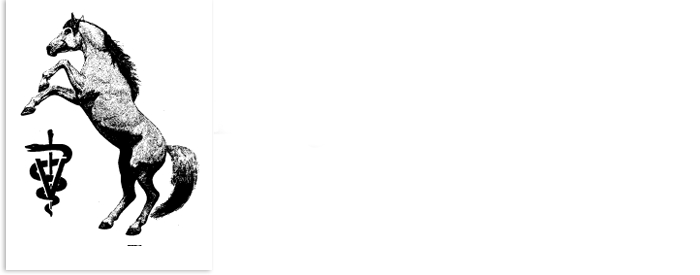Hock Lameness - Bone Spavin
Frequently, I am asked to examine a horse for back pain. Although the pain along the back is real, the problem often lies further down on the horse. Usually it stems from a chronic hind leg lameness. More often than not, the lameness is in the hocks. What happens is that the hind leg lameness causes the horse to move awkwardly to avoid pain. In this effort he will use his back differently than normal with the result that the muscles along the side of the spine become sore. Imagine if you had to exercise each day with a pebble underneath the heel in your shoe. Very quickly you would learn to run in a way to avoid the pain. In this effort you would twist your back to avoid bearing weight on the side that landed on the pebble. Very shortly your back would start hurting from all the twisting you were doing.
The leading cause of chronic hind leg lameness is call "bone spavin". Horses with bone spavin can have any of the following symptoms. They can be sore along the muscles on either or both sides of the spine. They can come out of the stall stiff but "work out of it" as they exercise. They may stumble a lot behind or start having difficulty coming underneath themselves to do dressage work. They may have difficulty going down hills on trails. Other horses may start refusing jumps where once they were very willing. Western horses may show difficulty doing sliding stops or spins off the hind legs.
When examined, these horses can be positive to hind leg flexion tests. This involves lifting and flexing the hind leg by grasping the cannon bone and flexing the hock. The leg is held in this position for 1 minute and the horse is jogged off. A positive flexion test is when the horse limps during the first few steps following the flexion test, or refuses to trot and breaks into a canter. When lifting the hind leg and pressing the inside splint bone, they will often lift their hind leg like a dog. While in motion, these horses tend to land the affected hind legs in toward to the center. This is in an effort to bear weight on the outside of the leg.
There are four joints in the hock. Bone spavin is a fancy term for osteoarthritis of the bottom two hock joints. Ninety percent of the range of motion in the hock comes from the top joint. In bone spavin, the affected joints are the bottom two joints, which are flat joints. They do not need to flex in order for the horse to move normally. If the joints fuse, the pain resolves completely.
Fortunately, treatment of this problem is very successful. Treatment involves one of four choices. The first option is simply to warm the horse up on a loose rein for 15-20 minutes, prior to strenuous exercise, and to give bute (an aspirin like drug for horses) as needed. More often these horses are treated with joint injections. One can inject these horses with a drug like hylaronic acid, which is anti-inflammatory as well as helpful in re-establishing normal joint fluid. Other drugs used for joint injections are corticosteroids. Corticosteroids are more powerful anti-inflammatory drugs than hylaronic acid. However, corticosteroids will cause the cartilage that lines the joint surface to become brittle. This will hasten the fusing of the joints (which is good in the lower hock joints), but will require the joints to be injected more often then if hylaronic acid is used.
Recent Advances In Treatment
If a horse becomes unresponsive to joint injections two alternatives remain. Both are attempts to cause complete fusion of the lower two joints in the hock. As stated above, these are the joints are causing the pain. However, these joints only contribute a very small part of to the range of motion in the hock. If the joints are fused, either naturally or through medical intervention, the pain caused by the bone spavin is eliminated.
One method of causing the fusion, called arthrodesis, is surgical. The horse is placed under general anesthesia. Using a surgical drill, the cartilage in the affected joints is literally drilled off. This causes the joint to heal bone to bone resulting in fusion.
Within the past five years an alternative to surgery has been developed. This method uses a chemical agent to erode the joint surface leading to fusion. The hock is injected with the chemical MIA. The horse will be very painful for 4 to 16 hours. This painful period is managed with intravenous medication. For the next two weeks, the horse will be very sound. Over the following month it will regress somewhat. At one practice where 38 cases were treated in this way, 75% (29 patients) responded to treatment to the point where they were back performing their desired activity. Of the remaining 25%, three more cases responded when a surgical arthrodesis (described above) was done following the chemical treatment.
Among all the sports medicine problems faced by the horse, bone spavin is probably the most common. It affects jumping and dressage horses, trail horses, endurance horses and backyard horses. Fortunately, with treatment it can be managed effectively for years with horses competing and performing for their owners with little or no limitations. With recent advances in treatment, even horses that once would have had to retired from serious work can now be treated successfully and go back to rigorous activity.

